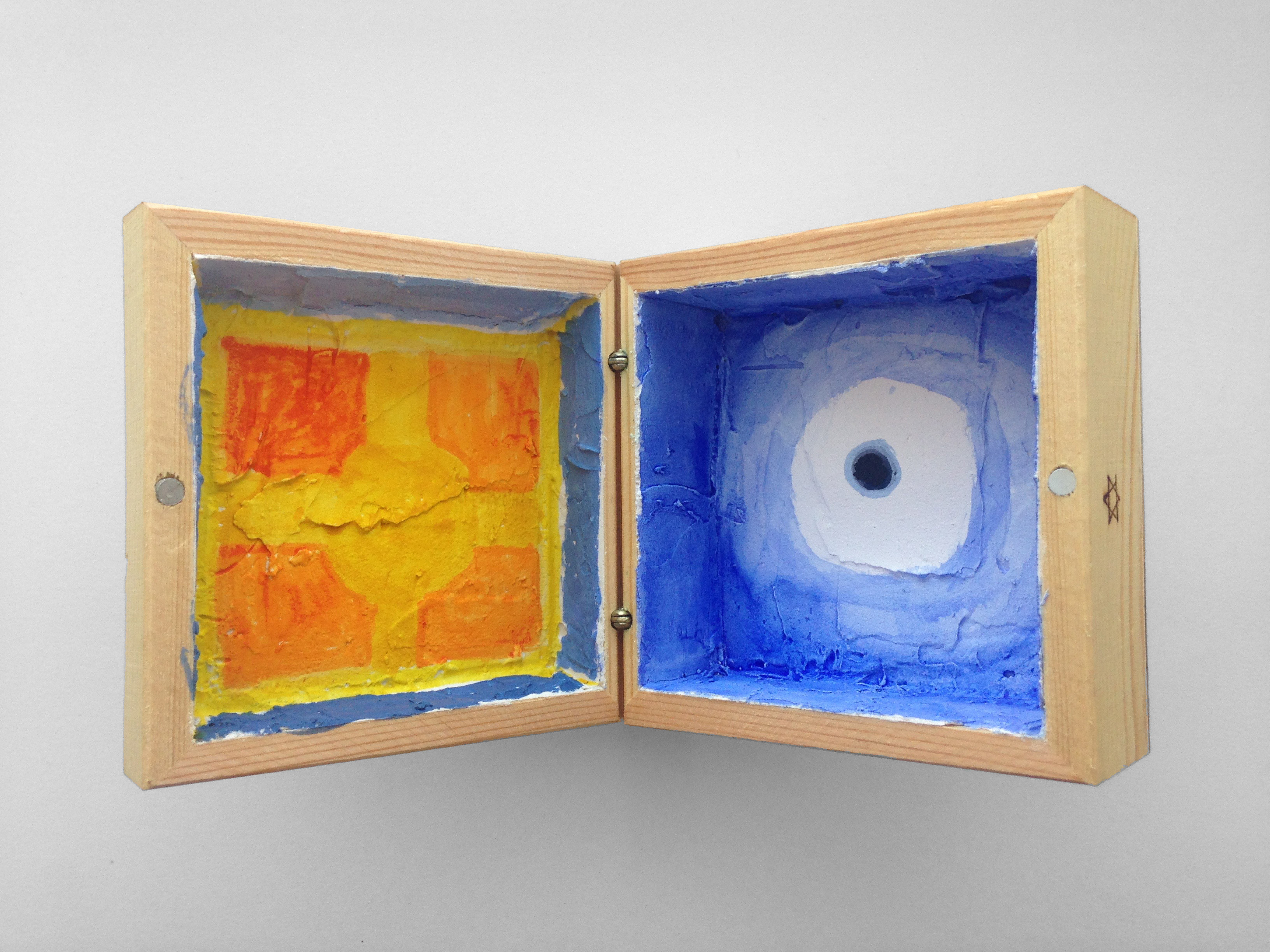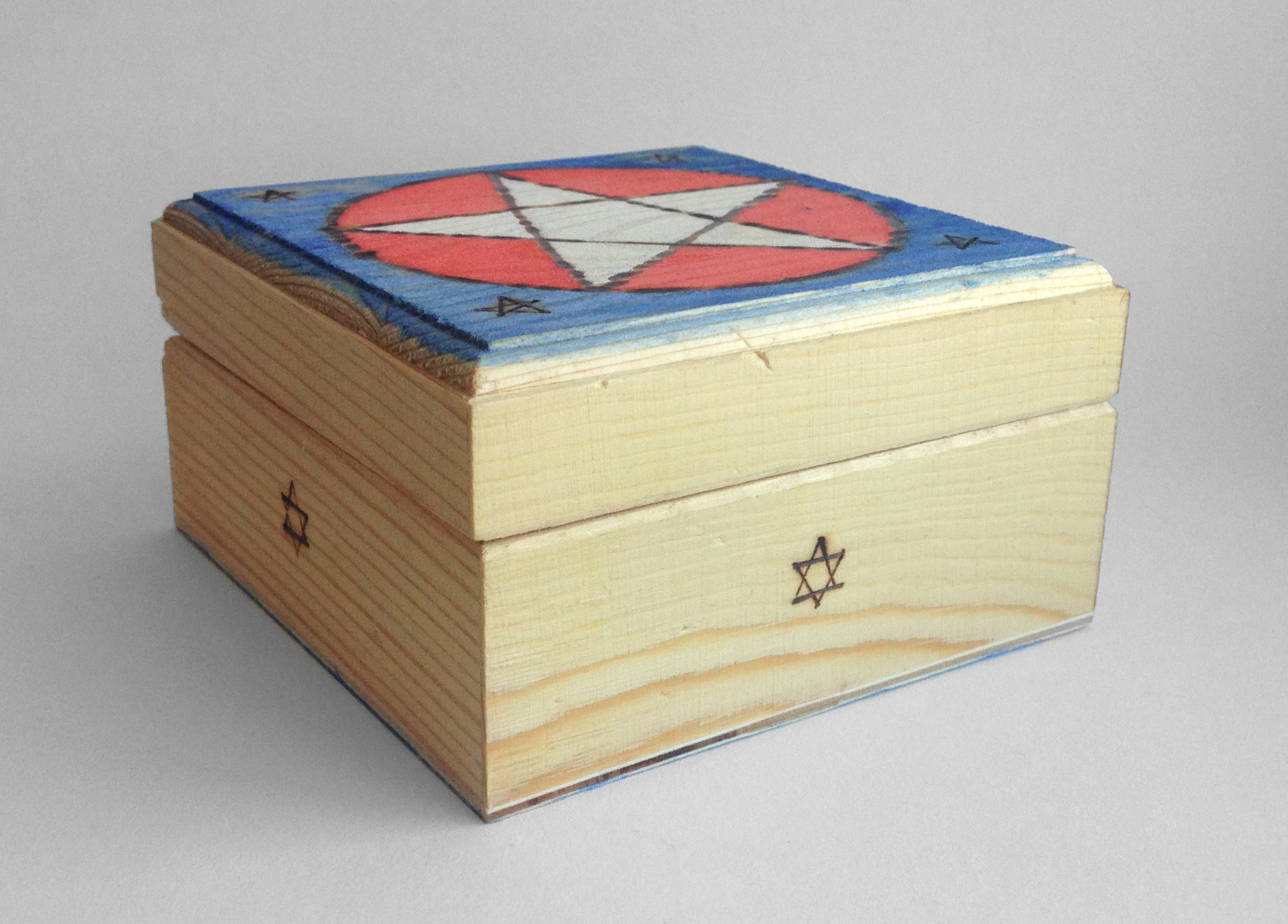I think like most Pagans and other esoteric people, I’m a glutton for fancy books, and when I picture a personal grimoire, I always imagine an illuminated manuscript—something like a medieval book of hours.

I’ve talked about the papers and writing tools that go into making a good book, but a good magical tome needs color, so I wanted to finish this series by talking about the best ways of adding color to a book.
Stain
One of the first ways people like to add color to a grimoire is through some kind of staining to make the paper look aged. The most common types of staining media are tea and coffee, which are cheap and readily available. The one thing to remember here is that both can be acidic, especially coffee. And as I mentioned in part one, the last thing you want is to turn your paper acidic. Fortunately, some bookbinders have come up with solutions. I recommend checking out this video from Nerdforge where they make a book out of coffee-stained paper. They deal with the acid problem by adding baking soda to the coffee until it’s pH-neutral. Litmus test paper is easy to find through Amazon, so doing this at home would be cheap and simple. In theory, you could also use ground up white Tums antacid tablets to neutralize the acid. Tums are made out of calcium carbonate, which I mentioned in part 1 is the buffer used in a lot of archival papers. I don’t think I’d dry the paper in the oven they way they do in the video, though.
If that’s too much hassle, you could also just buy paper that’s toned tan.
Artwork
Paint: The absolute best option for creating color artwork is going to be watercolor. Watercolor is extremely archival. It will last for hundreds of years at least if you take moderately good care of it, and it gives you nice, vivid colors without a lot of trouble or any additional mediums or solvents needed, just water. It’s also made from far more natural materials than something like acrylic media. This is also true for gouache, which is very similar to watercolor, but thicker and more opaque. The only drawback is that watercolor and gouache are water soluble, so you have to make sure not to get any water on dry watercolor art. I’m not bothering to recommend a brand here, because honestly even the little watercolor trays kids use in school are good.
Ink: There are also pigment-based colored inks, like Dr. Ph. Martin’s Bombay India Inks, which handle a lot like watercolor, but are mostly waterproof when dry.
Colored Pencils: Colored pencils are popular with many people, because they avoid a lot of the mess of paint or ink, and they’re more accessible to people who aren’t necessarily artists. The problem with colored pencils is that standards are pretty low for them. They’re wax-based, and wax isn’t very archival—it will probably eat away at your paper over time. They also tend to have low lightfastness ratings, which means that the color will fade gradually as it’s exposed to light. If you have to use colored pencils, Derwent Graphitint pencils seem to be some of the best when it comes to lightfastness, and their composition means they’re probably lower in wax content than other pencils. They are also water soluble, so you can draw with them and then use a wet brush to blend and intensify color. Prismacolor pencils, which are the most popular colored pencils, are very waxy, and don’t even seem to have a lightfastness rating.
What I Don’t Recommend
The main things I don’t recommend are dye-based colors. This includes bottled dye-based inks and popular drawing tools like Copic markers and other alcohol or water-based markers. They can be fun to play with and they blend well, but dye-based ink colors will start fading right away, often looking much duller within a matter of months.
I also don’t recommend things like pastels and oil paints. They can have great lightfastness and produce beautiful artwork, but being oil-based, they’re destructive to surfaces like paper and fabric unless the surface is primed with gesso, which wouldn’t be practical for book pages.
Finally, I’d avoid acrylic paint. Acrylic ink is probably fine, but the paint is thicker, and if you have acrylic paint on two pages facing each other, they might stick together.







